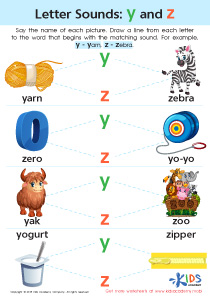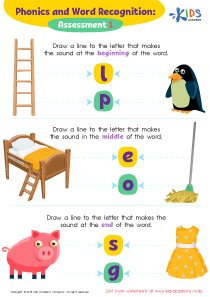Normal Ending Sounds Worksheets for Ages 5-7
4 filtered results
-
From - To
Unlock the magic of phonics with our "Normal Ending Sounds Worksheets for Ages 5-7". Perfectly designed for young learners, these engaging worksheets help children identify and practice common ending sounds in words. Through fun activities, kids will enhance their reading and spelling skills while building a solid foundation in phonemic awareness. Each worksheet features colorful images and interactive exercises that capture young minds' attention, making learning a delightful experience. Ideal for use at home or in the classroom, our worksheets provide a structured yet enjoyable way to master essential literacy skills. Start the phonics adventure today!
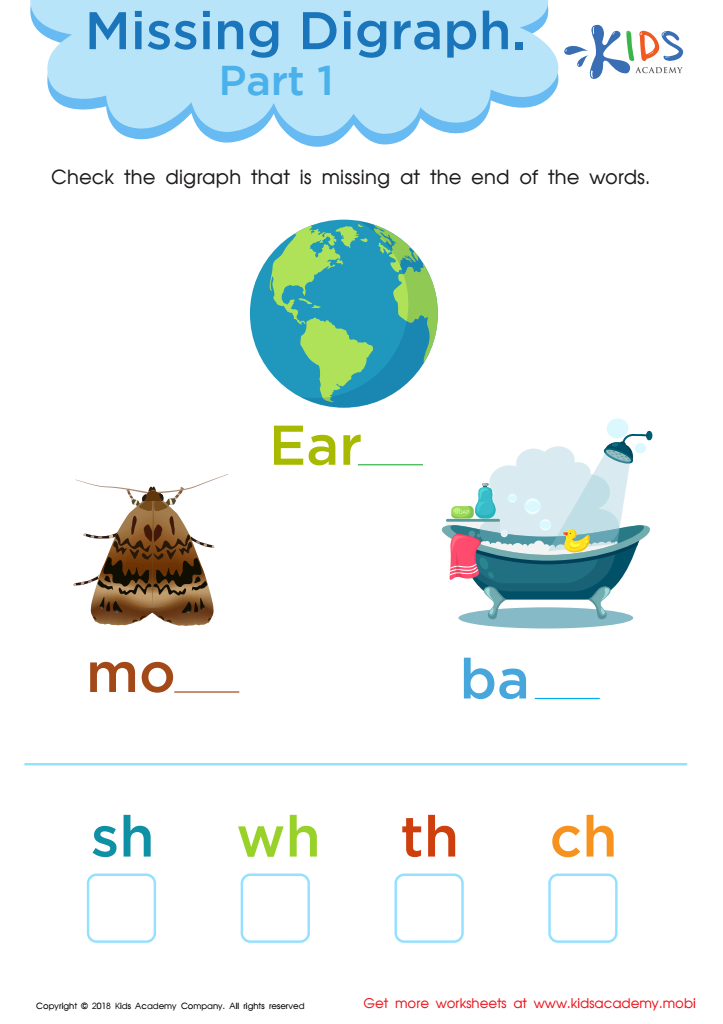

Missing Digraph: Part 1 Worksheet
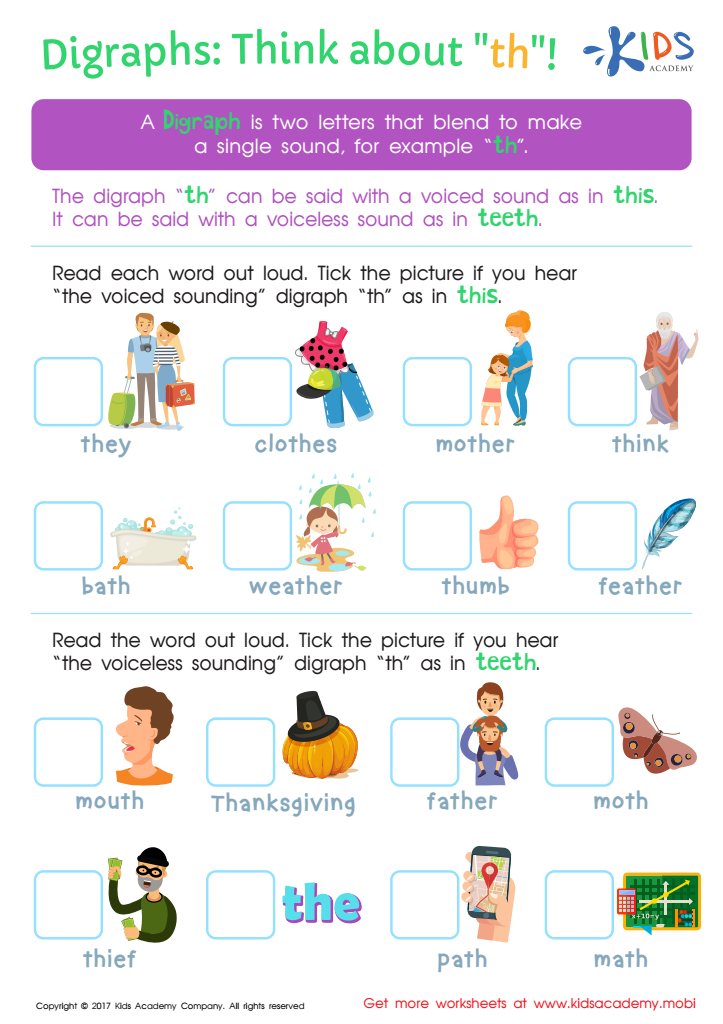

Digraphs: Think About "th" Worksheet
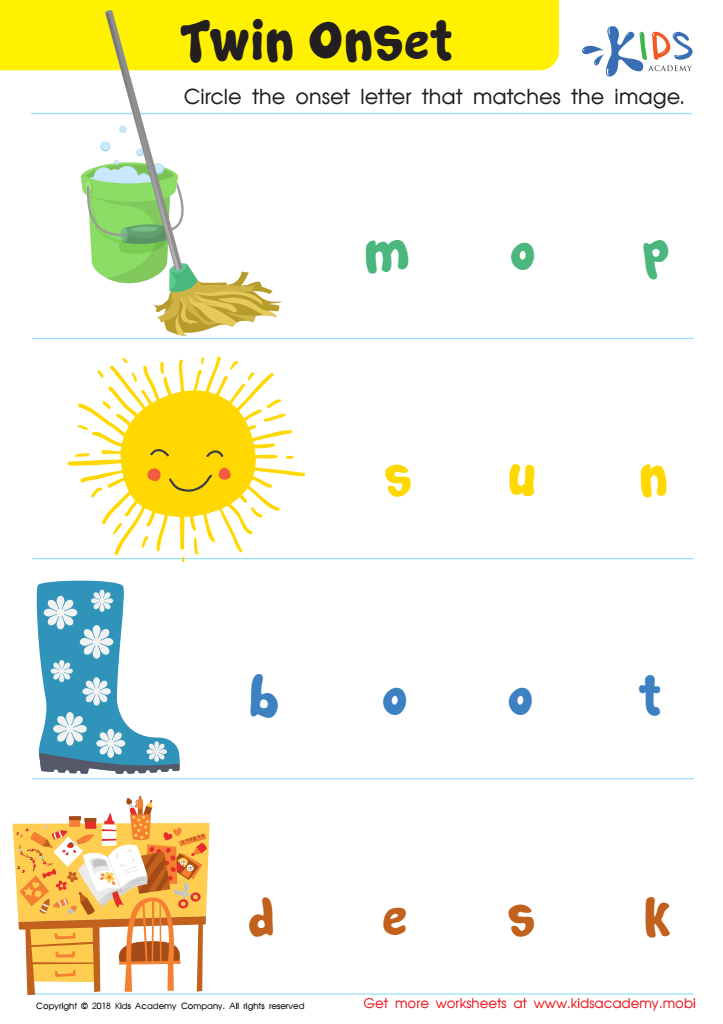

Twin Onset Worksheet
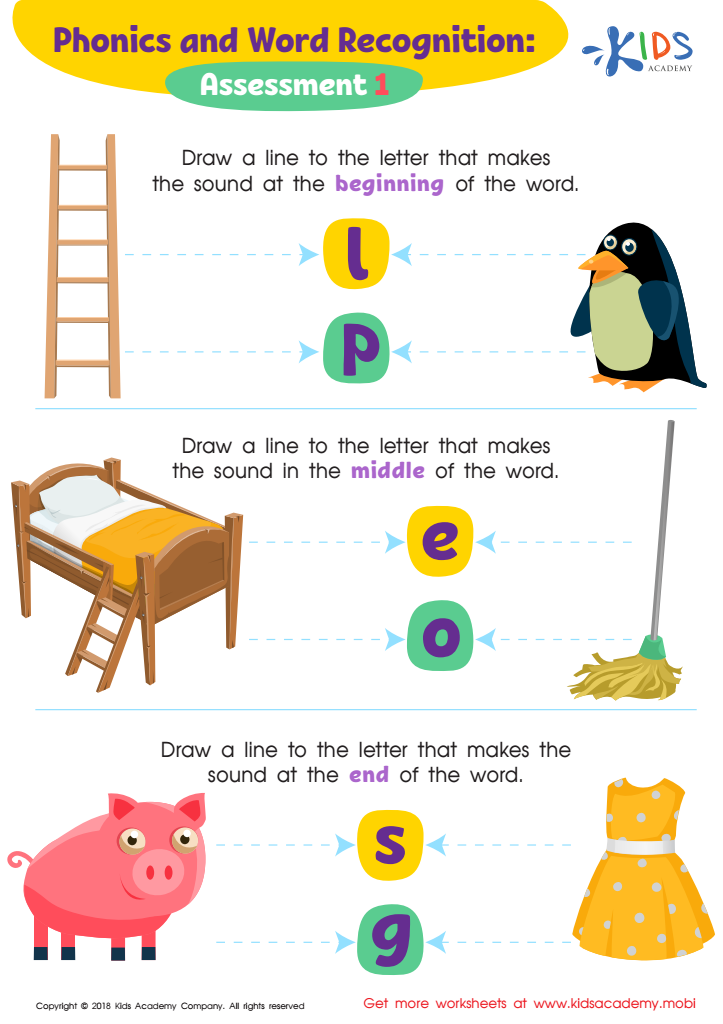

Phonics and Word Recognition: Assessment 1 ELA Worksheet
Parents and teachers should care about normal ending sounds for children ages 5-7 because this skill is pivotal in early literacy development. At this age, children are learning to decode and assemble words, and discerning the ending sounds helps solidify their understanding of phonemes, which are the smallest units of sound in language. Mastery of ending sounds allows children to spell words correctly, understand rhyming patterns, and develop a foundation for reading fluency.
Awareness of ending sounds also enhances a child's ability to segment words, an essential skill for reading and writing. For example, knowing that “cat” ends with the “-t” sound aids in recognizing and forming other words with similar patterns, such as "bat" and “hat.” This familiarity with sound patterns promotes greater confidence and independence in reading and writing tasks.
Furthermore, strong phonemic awareness is closely linked to future academic success. Children who can easily pick out sounds within words are typically better readers and spellers. Thus, investing time and effort in teaching and reinforcing ending sounds equips children with crucial tools they need to achieve literacy milestones and academic excellence. Therefore, both parents and educators should emphasize this foundational skill in early childhood education.

 Assign to the classroom
Assign to the classroom




